Read This: Visionary: Gardens and Landscapes for Our Future
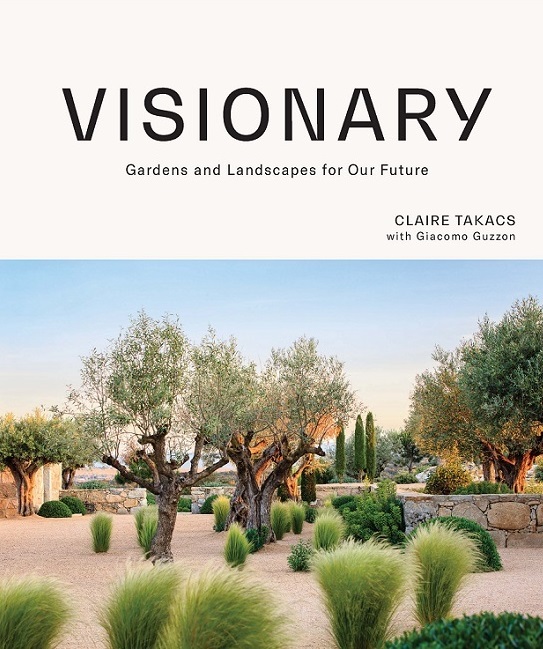
In 2019 I reviewed Australian photographer Claire Takacs‘s beautiful and engaging book Dreamscapes. I raved about it but felt compelled to add this critique:
“My one complaint about the book is my usual one: coverage of U.S. gardens is limited exclusively to coastal states: the Pacific Northwest down to California and New England down to the Mid-Atlantic. Where are the Southern, Southwestern, Mountain States, and Midwestern gardens? The absence of interior U.S. gardens is one of my pet peeves about most gardening books and magazines. I challenge Takacs and other photographers and garden writers to branch out from the well-known (and moneyed) garden corridors on the coasts and find worthy subjects in hotter, drier, harsher regions, which may well represent the future in terms of gardening in an era of climate change.” [Emphasis added] —Read This: Dreamscapes by Claire Takacs
Claire graciously reached out afterward to say that she appreciated the feedback and, moreover, accepted my challenge. And in fact she has nailed it with her newest book, Visionary: Gardens and Landscapes for Our Future. Featuring 80-some gardens and landscapes from around the globe (80! not an easy accomplishment), luminously photographed by Claire, with perspicacious descriptions by London-based landscape architect Giacomo Guzzon, Visionary is a masterpiece. Not only for its breadth and beauty, but because of Claire’s newfound focus on gardens that rise to the challenges of a changing climate.
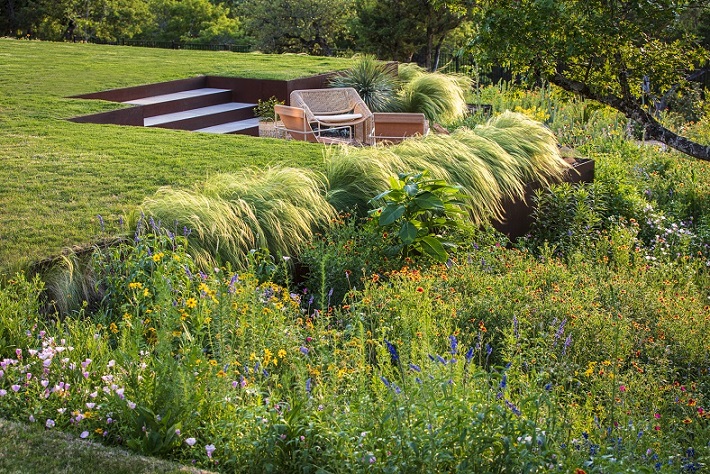
As Claire explains in the introduction, she’s not satisfied anymore with simply chasing beauty and light in great gardens. Her focus has shifted from pure aesthetics “to a time when beauty alone, still essential, is no longer enough.” She continues:
“Today the world is experiencing prolonged periods of drought, extreme temperatures, torrential rainfall, and flooding, which all necessitate new ways of planting and design — striving for more than just aesthetics.”
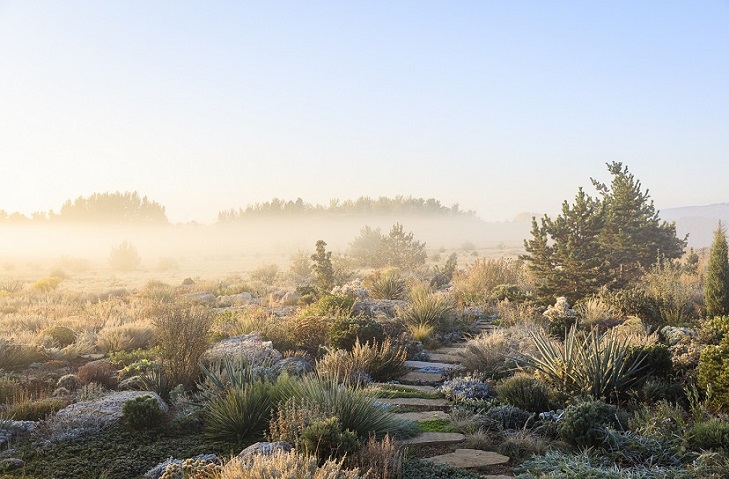
Fueled by a new sense of purpose to document gardens and landscapes that help to mitigate the effects of climate change on a hyperlocal level, Claire traveled around the world to photograph an astonishing variety of private gardens, landscapes, parks, public gardens, university and corporate campuses — even parking lots. Rather than shying away from harsh gardening regions, she leaned into them, featuring the work of designers and gardeners who are rising to the challenges of extreme weather and climate unpredictability.
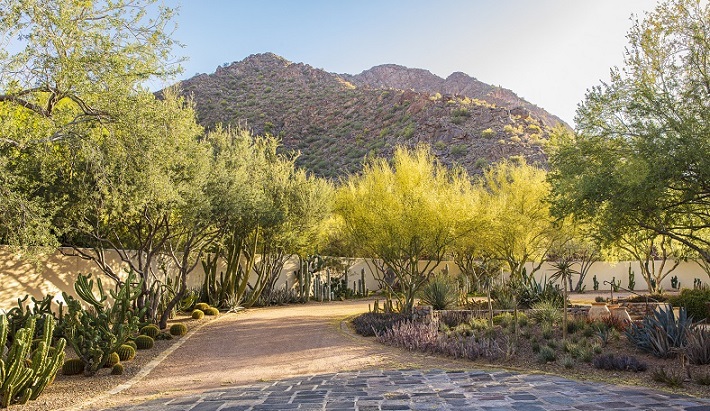
Visionary showcases landscapes in Spain, France, Greece, the Netherlands, Denmark, Sweden, Germany, Morocco, the United Kingdom, Australia, New Zealand, and Singapore. The final 100 pages of the book are devoted to the United States — not just the East and West Coasts but also Texas (Austin and El Paso), Arizona, and Colorado. I’m particularly excited that Coleson Bruce’s crevice garden, a private garden designed by Amy Hovis of Eden, and spaces designed by Christy Ten Eyck (including Kingsbury Commons at Pease Park and Hotel Magdalena) appear. Plantsman, designer, and author Lauren Springer’s personal garden in Fort Collins closes out the book in a glorious spread of photos — a garden undaunted by its severe northern Colorado climate (for more on that, see my review of Springer’s book The Undaunted Garden).
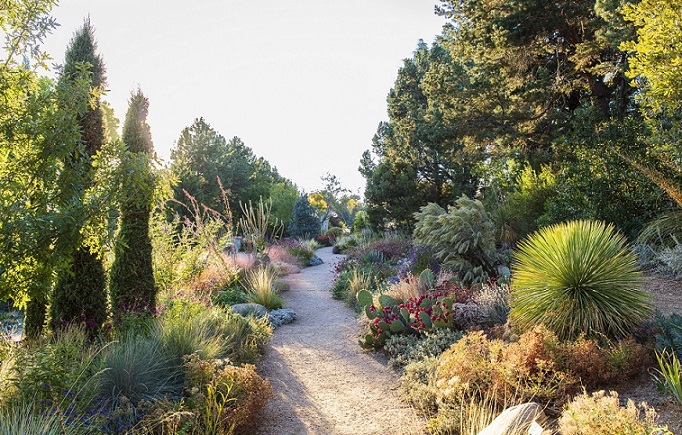
Reading Visionary — and it is worth reading, not just looking at the photos — made me appreciate just how many people around the world are stepping up to the challenges of climate change with responsive and resilient garden making. These folks aren’t throwing up their hands in discouragement, nor are they trying to force old ways of gardening — through the use of excessive watering or labor or chemicals, indifferent to local ecosystems of flora and fauna — to work. Instead, they’re fitting the garden to the place, to the plants, and to the wild creatures we share this planet with. And they’re doing it beautifully.
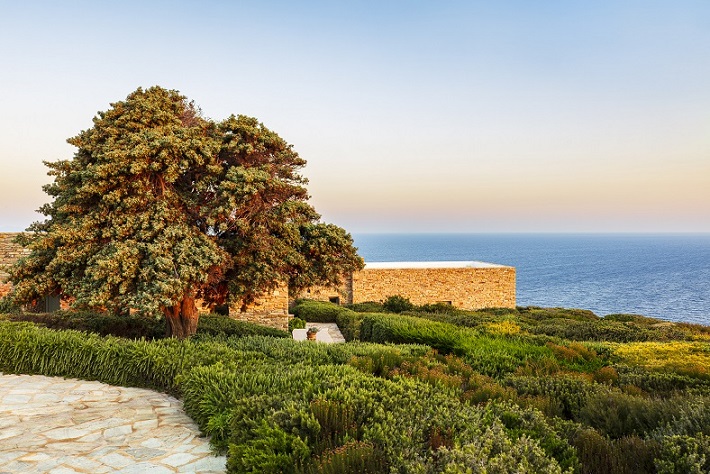
All of which makes Visionary a hopeful book. After all, no matter where one gardens, climate change is affecting us all. Seeing how gardeners and designers are adapting, changing popular conceptions of beauty and what landscape design can be, and connecting people more deeply with the natural world — it’s incredibly inspiring. Visionary even.
Disclosure: Hardie Grant Books sent me a copy of Visionary, and I reviewed it at my own discretion and without any compensation. This post, as with everything at Digging, is my personal opinion.
I welcome your comments. Please scroll to the end of this post to leave one. If you’re reading in an email, click here to visit Digging and find the comment box at the end of each post. And hey, did someone forward this email to you, and you want to subscribe? Click here to get Digging delivered directly to your inbox!
__________________________
Digging Deeper
Come learn about gardening and design at Garden Spark! I organize in-person talks by inspiring designers, landscape architects, authors, and gardeners a few times a year in Austin. These are limited-attendance events that sell out quickly, so join the Garden Spark email list to be notified in advance; simply click this link and ask to be added. Season 8 kicks off in fall 2024. Stay tuned for more info!
All material © 2025 by Pam Penick for Digging. Unauthorized reproduction prohibited.


It sounds like you connected with the author, then guided her to some of the garden jewels in the vast US interior.
I had the privilege of connecting Claire with Coleson, Amy, and Christy and reconnected her with Lauren. I’m delighted it worked out for her to visit Texas, Colorado, and Arizona during her wide-ranging project.
How often does an author reach out to address a critique? Probably not too often. And then to have picked up your challenge and run with it is quite special indeed. In fact, you may have been the catalyst for her current book, which looks to be a wonder. Very cool. (Wish she had made it to Austin and visited your garden too…)
Actually Claire DID come to Austin! I had the pleasure of meeting her at Coleson’s garden, and she ended up featuring several Austin gardens in the book.
Wow, sounds like a great book, and the photos are beautiful! I have the same pet-peeve about lack of coverage (in general, not just gardens) of what’s happening in the U.S. interior. Even with major events and weather, we sometimes don’t get the coverage the coasts would get. I’ll definitely check into this new book. Thanks!
Good point, Beth. Coverage of all kinds can be very skewed to the coastal corridors.
With temps flirting with 100 this weekend looks like maybe I’ll be indoors and finally have a chance to pick up my copy of this book and get reading.
That’s how it is here, and I’m reading, reading, reading. Enjoy!
Spot on with your critique that most garden books and magazines focus on the coasts. It’s an easy lift. I am incredibly grateful for that coverage, since that is where I live, but I think there is sooooo much diversity and alternative ways of interpreting a garden that I would love to see. I revisited my home state of Wisconsin a few years ago and went to Aldo Leopold’s cabin near Baraboo. I was simply stunned at the diversity of prairie plants there, which gave me the inspiration to stop fighting the horsetail down near the creek in our own garden, and instead see if I could intermix some tough, taller plants into the mix, creating my own version of a prairie that wouldn’t require so much effort. It’s too early to tell if it will work, but I appreciate the perspective shift that Leopold’s space provided.
This is what I love about garden travel in general — it helps you see your own garden with fresh eyes when you return home. In your case, you brought home ideas generated by your former home state! I’m intrigued by your Oregon prairie and how it might differ from a Wisconsin version. Garden on!